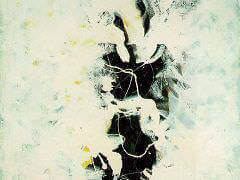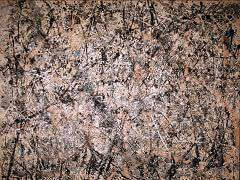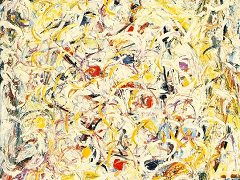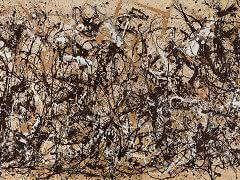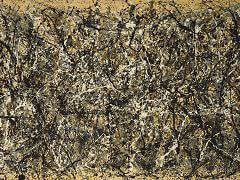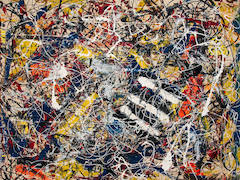In Echo: Number 25, 1951 by Jackson Pollock
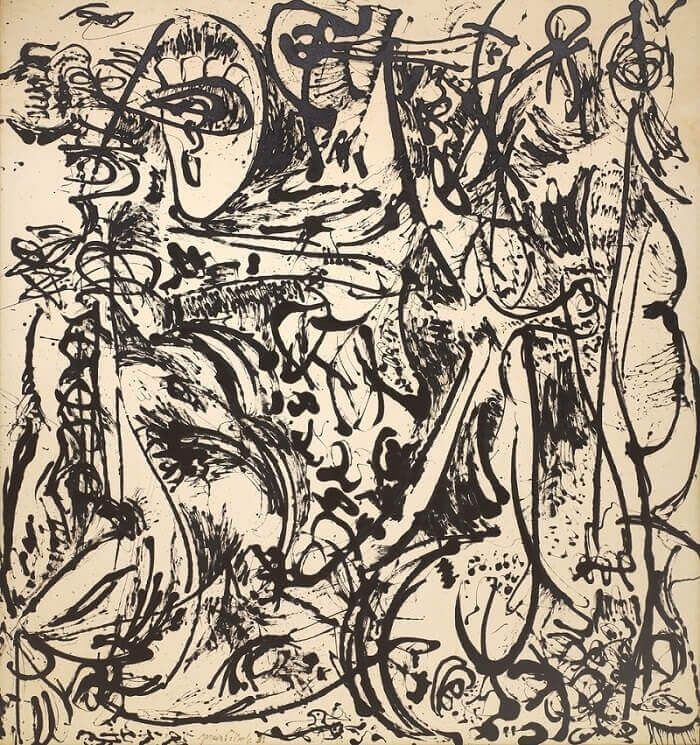
Pollock became more deliberate about his paint application as he moved into his black-and-white works of 1951. In Echo: Number 25, 1951, content has returned, in the form of its evocative title and
intimations of the figure (think Girl Before a Mirror of Pablo Picasso).
The conservators found clues about Pollock's process when they spotted distinct spines of paint on the back of the canvas, inside the broader marks of black. They knew from recollections of Lee
Krasner, Pollock's widow, that he had squeezed the bulb of a turkey baster to spread enamel paint on the picture. But now they understood better how he used this kitchen tool. The lines represent
the points where the baster touched the surface of the picture - suggesting a process more akin to drawing, and even less like a ritual dance.
Over time, the exposed canvas had degraded to an uneven, straw-yellow color, like an heirloom tablecloth. The color was different at the top of the picture, which had been exposed to more light and
heat over the years.



